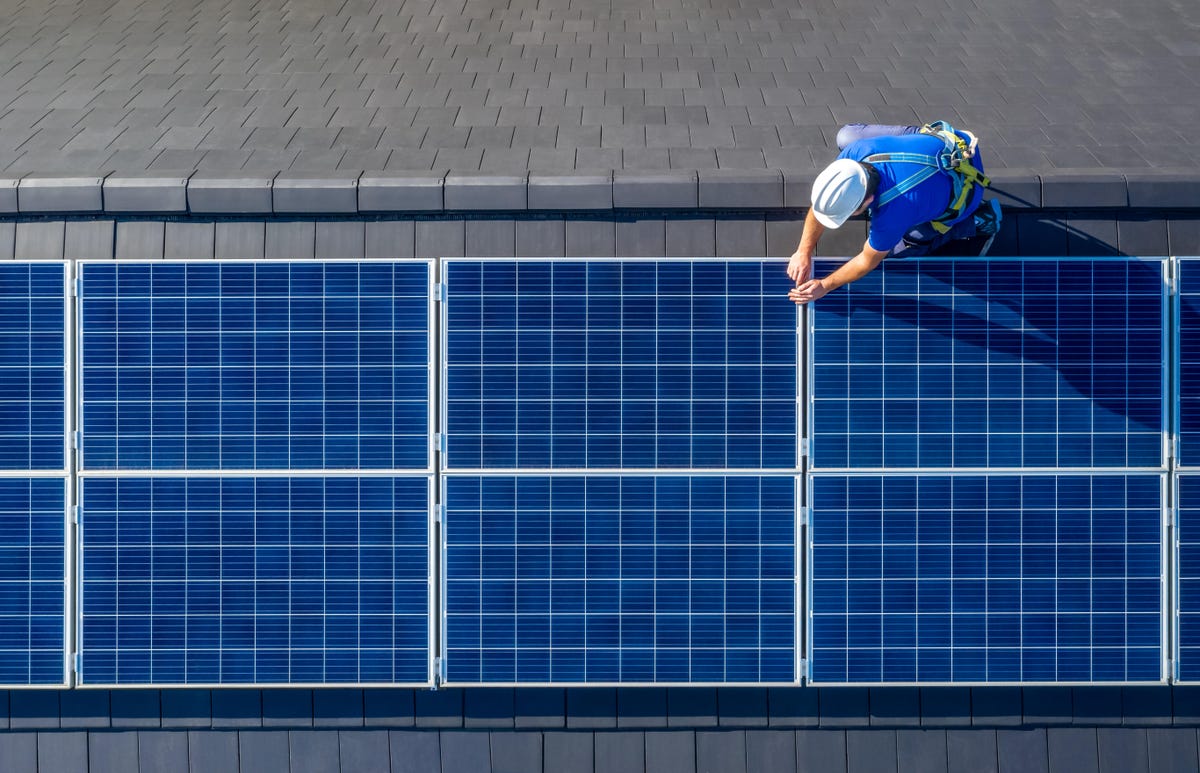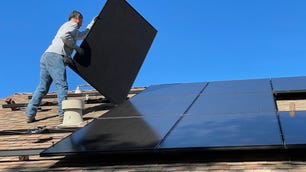If you’ve decided to get rooftop solar panels, be patient — it’ll take a few months before you see those savings in your electric bill.
Installing solar isn’t a quick-turnaround project. The physical installation of a residential solar system is a relatively small construction project that can be completed by a competent company in as little as a single day. But the formal process that takes place between choosing a solar installation company and actually having a working system on your property involves several more steps before and after installation day and typically takes multiple months to get through.
“The big issue is you can put panels on the roof, but will the panels get approved for inspection? Will they go PTO?” said Garrett Mendelsohn, referring to “permission to operate.” Mendelsohn is founder of Puerto Rico-based Solar Bootcamp, which offers training for solar professionals.
In reality, a single solar system installation is a sort of dance marathon involving a series of moves and interactions between a homeowner, a solar company, local permitting agencies and the homeowner’s utility. It can sometimes get messy, but if you know what to prepare for, you can go the distance.
How long does it take to install rooftop solar?
The short answer here is: It depends. Factors include things like the complexity of your system, potential challenges and obstacles specific to your location, market conditions, and backlogs at utilities and local government departments.
You’ll notice that some of the above factors are completely out of your control, and likely out of the control of any installer you choose. Asking around with neighbors who’ve had systems installed recently might give you a better idea of how quickly the process is moving in your area at any given moment. The reality, though, is that at least a few, if not several, months are likely to pass between the moment you decide you’re serious about getting solar and when electrons start flowing through your system.
Here’s what the process will look like.
Step 1: Choosing an installer
Approximately a few weeks to a few months, but take your time
This step is easy to overlook, but it’s arguably the most important. Selecting a solar company shouldn’t be as simple as just reading a few reviews online and then signing a contract with the one that sounds the best in your area. Definitely start with this step to figure out which companies work where you are. CNET has a wealth of information on the topic, but it’s impossible to be completely comprehensive in a market as vast and fast-moving as solar has become.
A good place to start is CNET’s curated list of best solar companies. Read our reviews, check company websites and look at Better Business Bureau reviews, among other options. But also ask around with neighbors, get references from companies and most important of all, get multiple quotes from local installers that you can contrast and compare before signing any contracts or transferring any funds to anyone.
Keep in mind, the residential solar industry is highly competitive, and salespeople are highly responsive. This step will take as long as you need. Pressure to sign a contract quickly could be a sign of a scammy company, so beware.
For extra peace of mind, you can check on a company’s license and certifications through the North American Board of Certified Energy Practitioners.
This whole process is likely to take a few weeks at minimum, depending on how quickly installers can get you a quote. Many can come up with an estimate without physically visiting your property, using tools like satellite imagery and videoconferencing, but others will want to actually see your setup on site with human eyeballs. Give yourself up to a month or more to do the due diligence with this step — it’ll save headaches later.

It can take a few months to go from signing a contract to generating solar power.
Step 2: Site assessment
Approximately 1-3 weeks
Installers handle this step slightly differently. Increasingly, companies are doing preliminary designs and quotes remotely. But in most cases an installer is going to want to take a closer look in person before finalizing the plan and signing a contract. The results of this visit could mean an alteration to the design (and price), or the suggestion that some sort of prep work be done, including minor things like trimming trees or big deals like roof work that could add major expense and delays.
Most solar companies will prioritize this step because they devote lots of resources to the customer acquisition side of the business, but some installers also have more work than they can handle, so you might find yourself waiting a bit. We most often hear that a site assessment should be done in one to three weeks after making contact.
Step 3: Designing and engineering your new solar system
Approximately 2-14 days
This step is usually going to be done on the backend by the solar company, probably using software that spits out a design relatively quickly. The homeowner should be given an opportunity for feedback before anything is finalized. If not, you should demand the chance to review the design before signing off on anything.
This step is largely a function of how busy your solar company is. It should be able to plug the details of your project into some software and have a design in an afternoon. If your property is exceedingly unique or challenging to install solar panels on, it’s possible the process could take longer. You may also have an installer who’s more meticulous or likes to run the design by local permitting agencies before finalizing it. This is a rare but good delay to encounter. Don’t be afraid to ask your installer about how it designs your system.
Step 4: Acquiring permits
Timeline can vary based on local government
This is one of the first big wild cards in the solar installation timeline, as different permitting agencies (usually a local city or county planning or construction office) operate differently, with different resources. In most cases, your installer should handle acquiring permits and interacting with the appropriate authorities, but timelines will vary. It can be good to ask installers upfront what the current timeline for permits is and how their working relationship is with authorities.
The US Department of Energy has led an effort in recent years to encourage local governments to speed up the solar permitting process, leading to some approvals happening in under two weeks while more stubborn jurisdictions may still delay your project for a few months.
You can get an idea of how quickly permitting takes with the clickable map in the Solar TRACE tool from the National Renewable Energy Laboratory, though only for areas with enough data to provide estimates.
Step 5: Installing solar panels
2-3 days but weather dependent
Installation day is usually about the homeowner staying out of the way and just standing back and observing. Installers will need access to your roof, attic, breaker box or utility meter and potentially any runs of wire in between. It’s possible you might need to plan on your home’s power being disconnected for periods of time.
A simple installation can be completed in less than a day, while more complex systems or properties might require two to three days. Installers will try to schedule during a time when weather conditions are ideal, but unexpected inclement conditions can push things back.
Step 6: Final inspection and commissioning
Weeks to months
This is the other big bottleneck that can delay system operation, along with permitting. Some combination of local permitting authorities and your utility (if you’re connecting your system to the grid) will want to inspect your new installation before approving it and giving you permission to operate. Once again your installer should coordinate all this with the relevant authorities.
This can be where the most frustrating delays occur, after it’s already been several weeks or even months, you have panels on your property but they can’t yet be activated.
“So many companies fail inspection over and over,” Mendelsohn said, adding that he’s seen more than one company take over a year to get things corrected and approved for operation.
This is where doing that diligence in step one while selecting your installer pays off.
Factors that impact the installation timeline
Mendelsohn noted that one factor consumers often overlook is whether an installer does all its own work.
“When companies subcontract, it causes a lot of issues,” he said, explaining that subcontractors aren’t adequately incentivized to take care of problems that come up after permission to operate is granted. During your installer research, look to see which companies use subcontractors and which don’t. CNET notes this detail in each of our solar company reviews.
FAQ
How long does it take for solar panels to start working?
The process from selecting a solar installer through installation through to receiving permission to operate from a local utility can often take several weeks or even several months.
How long is the solar payback period?
This is dependent on several variables, including the size of your system, your energy consumption, net metering rates in your area and even interest rates. On average it typically takes around six to 10 years to payback the cost of a solar system.





















+ There are no comments
Add yours